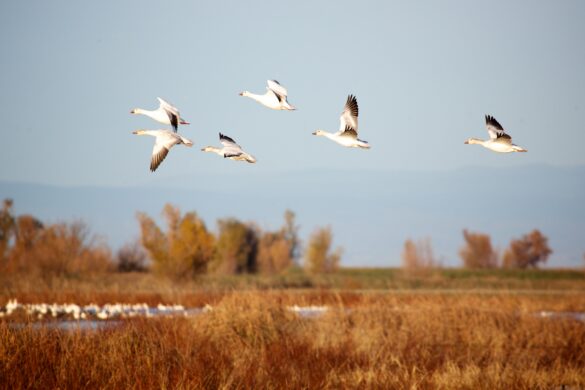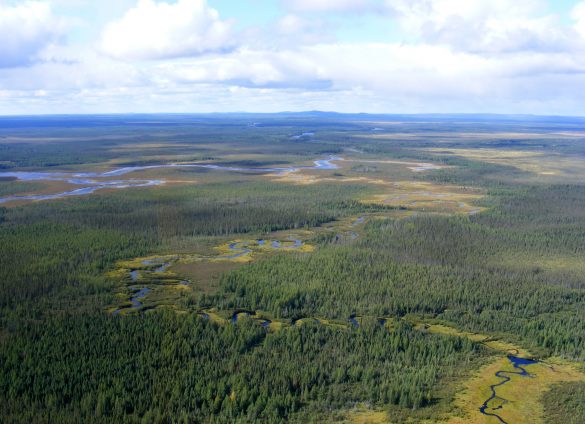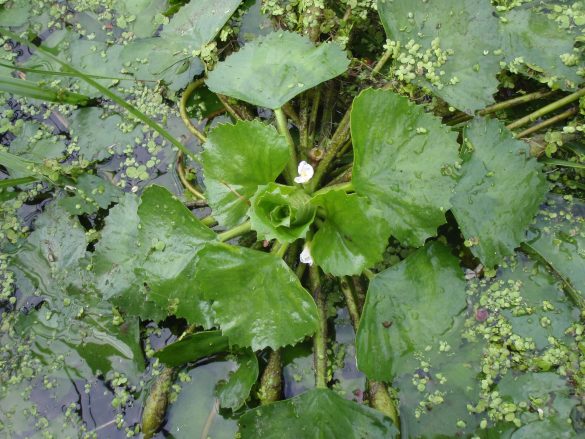Online tool for detecting invasive alien species
Quebec is Canada’s largest province and more than half of its vast area is forested. Québec’s 4,500 rivers and 500,000 lakes contain 3% of Earth’s renewable fresh water reserves. Due to its geographic location and size, Québec boasts a wide range of biological diversity. In order to preserve these aspects, Québec affords protection to its biodiverse sites from the commercial exploitation of natural resources and development. Québec’s wildlife includes nearly 786 vertebrate species and large numbers of invertebrates, including close to 30,000 insect species. In terms of floristic diversity, Québec is home to more than 10,000 species of plants.
Since 1992, the Government of Québec has been committed to the principles of the Convention on Biological Diversity (CBD) and has set safeguarding goals through strategies and action plans since 1996. It is currently working to meet the objectives of the CBD’s Strategic Plan for Biodiversity 2011-2020. In October 2013, it published its Government Biological Diversity Guidelines as a first step to reaching the Aichi Targets.
Québec has also made ambitious commitments in the sphere of protected areas in order to meet international goals. It has committed to protect 17% of its land mass and interior fresh water areas by 2020, as well as 10% of marine areas. The protected area percentage (as defined by IUCN) was 10,03% in March 2019.
And since November 2018, Québec has been co-coordinating the Advisory Committee of Subnational Governments and Biodiversity, with nrg4SD. Within this role, Québec wishes to ensure the contribution of subnational governments is acknowledged in the post2020 global biodiversity framework of the CDB.
Invasive alien species (IAS) especially aquatic species such as the zebra mussel, common water reed and green crab, are a danger to Québec biodiversity. They multiply faster than local species and compete with them for the same resources. They pose a risk to ecosystem health. Citizens need to be aware of these species, so they can help detect them early and limit their spread.
Whilst there is no specific strategy or action plan the Government of Québec is working to 1) outline the distribution of IAS and identifying priority species for biodiversity protection, as well as species most likely to be introduced in the future; 2) identify introduced IAS and their vectors of propagation; 3) raise awareness to promote good practices and increasing the diffusion of information on IAS. Sentinelle assists in delivering on these objectives.
Engaging citizens in IAS
Launched in 2014, Sentinelle is Tool for detecting IAS. Its main objective is to share information about IAS with all citizens and organisations in Québec, and to collect observations of IAS from across the province. It cost CAN $275 000 to build.
The Ministry for the Environment and the Fight against Climate Change initially established Sentinelle mainly for IA plant species. Then Sentinelle was extended to take also into account IA fauna species. The Ministry for the Environment and the Fight against Climate Change is responsible for Sentinel, but collaborates with the Ministry of Forests, Wildlife and Parks when fauna observations need to be validated or new species added to the application. It took almost 3 years to create, a complex process to get the tool accessible across all platforms. Working with consultants, information on which species would be considered as IAS in the coming years was gathered, both in terms of those already in Québec, but also the threats from other provinces and US states that could traverse the borders.
Sentinelle is divided into sections; first there is a catalogue of different species to consult to provide information to citizens. Photos and characteristic descriptions are provided to help identify species. There is also an IAS map, where people can input information about the location of particular species. All of the information collected is available online on an interactive map. If citizens want to transmit a new observation of a species, they are required to fill in an online form add photos. All observations the Ministry receives are validated by the obligatory photo and published directly into the map.
By giving people tools to get informed about plants and animals, Sentinelle has provided a means for active engagement in conservation efforts. 5560 observations of IAS have been transmitted and published in Sentinelle, 41 IAS species have been identified and the system has engaged 2882 registered users.
Sentinelle was the winner of an Octas in 2016 in the Mobile solutions category. The Octas are annual prices given by Réseau Action TI, an organisation in Québec that brings together professionals in information technologies.
Lessons learned and future plans
The main barriers to overcome in establishing Sentinelle were technical. It was important to achieve a balance between an easy to use tool, whilst also ensuring the required information on IAS was obtained correctly. And with advancements in technology elsewhere, it is a challenge to have Sentinelle keeping pace with other developments, and in keeping people interested in using it. Any future updates can learn from thee initial challenges.
More work is required to raise the profile of the tool and time needs to be taken to validate observations and help with technical questions when they arise. Sentinelle has gathered a lot of data and now the Ministry needs to analyse this and consider how to make best use of it in environmental policymaking and planning to manage IAS and the fight against climate change.
Ensuring the there is broader citizen engagement and not just the same people can be a challenge. And this is why steps are being taken to widen Sentinelle’s reach and raise its profile, both through developing partnerships between the Ministry and relevant organisations, and new projects, for example, with secondary schools in different municipalities who are working to collect data with pupils.
In July 2018, the Government of Quebec allocated CAD $ 8 million over five years to the fight against invasive alien plants. A total grant of CAD $ 6.25 million (CAD $1.25 million) was awarded over five years to the Fondation de la Faune du Québec, to manage a programme controlling invasive alien plants. The Ministry for the Environment and the Fight Against Climate Change (MELCC) was also awarded CAN $ 1.75 million to acquire knowledge on these plants while developing support tools for stakeholders.







